

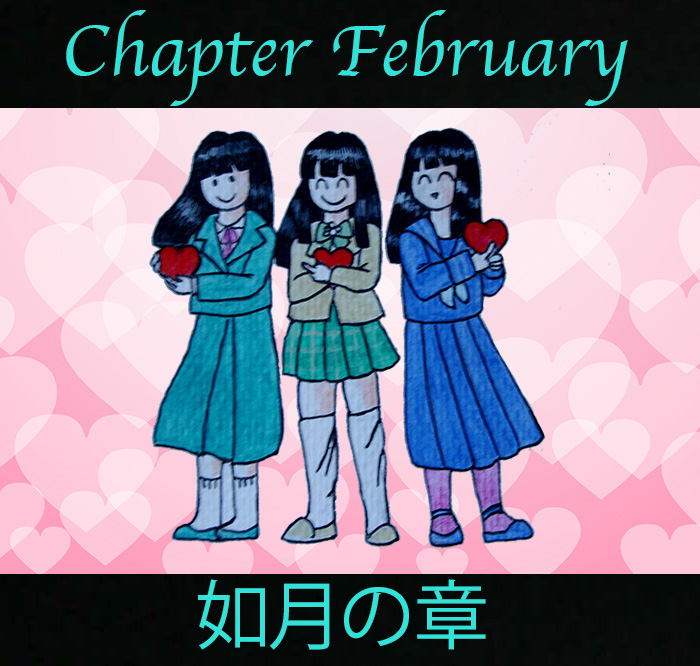
&&&&&&&&&&&&&&&&&&&&&&&&&&&&&&&
SETSUBUN
&&&&&&&&&&&&&&&&&&&&&&&&&&&&&&&
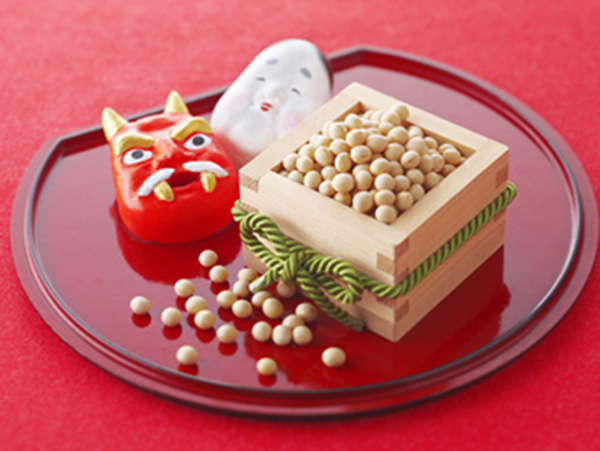
February 3rd is called “Setsubun”
According to the old lunar calendar of Japan, Setsubun is the day,
which divides the two seasons; winter and
spring.
Roast beans are scattered inside and outside the house and while shouting,
“Oni wa soto, Fuku wa uchi”, which means
“Fortune (Fuku) in, Evil (Oni) out!!”
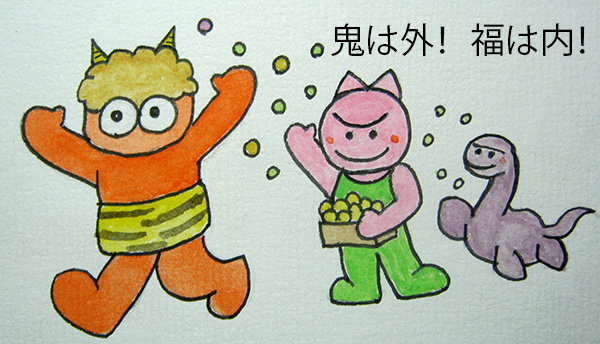
After scattering the beans, people eat as many beans as the year of their age.
It is believed that people can drive out illness and evil sprits and welcome
good luck by throwing and eating parched beans.
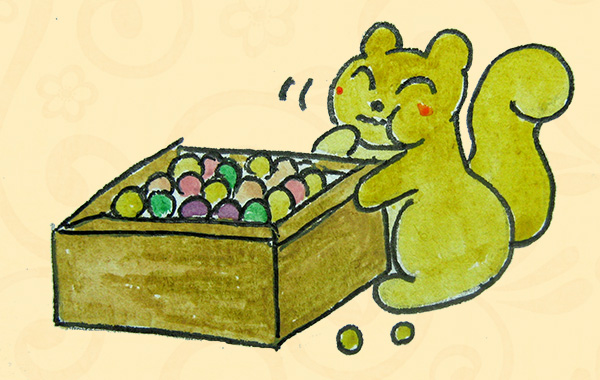
People also eat lucky long sushi roll, which called “Ehoumaki”
People have to eat Ehoumaki while facing the lucky direction,
which changes every year.
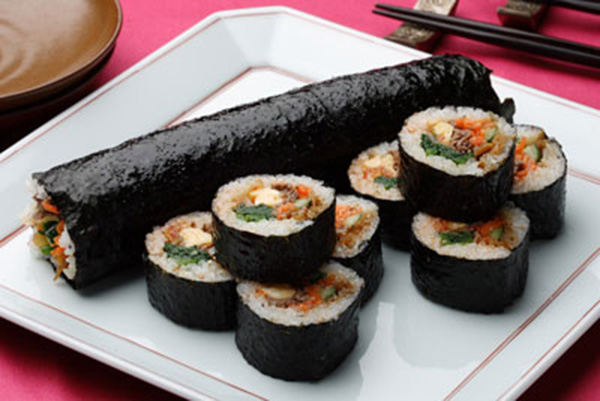
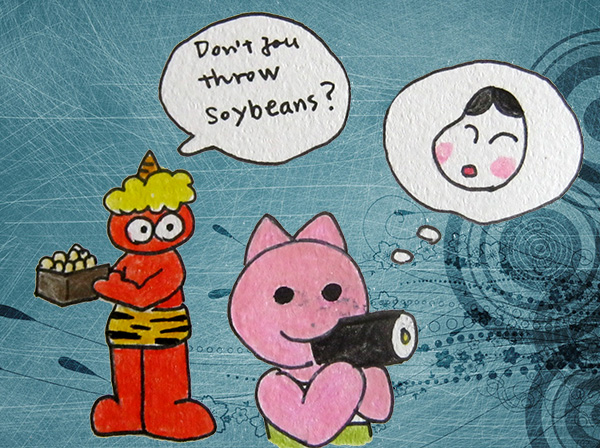
The bean-throwing ceremony is held on a grand
scale at temples and shrines.
Beans are thrown by sumo wrestlers and other-well known persons.
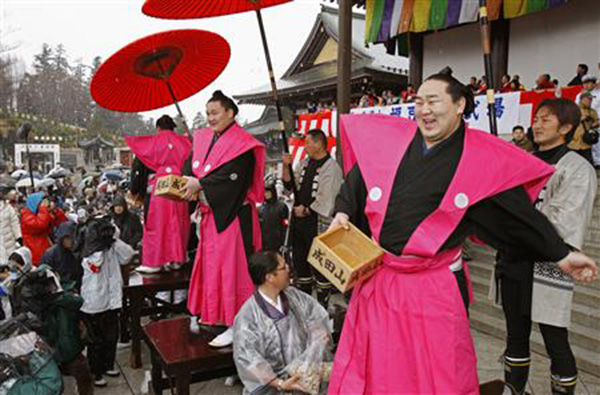
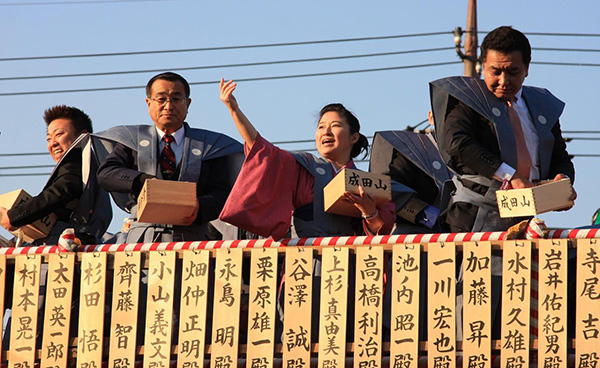
Oni is known as a kind of imaginary monster
and a symbol of evil.
The existence of Oni is very similar to that of ogres, devils, or trolls in
English.
Oni are gigantic human figures with two horns growing on their heads.
They wear only tiger skin loincloths on their muscular bodies and carry iron
clubs.
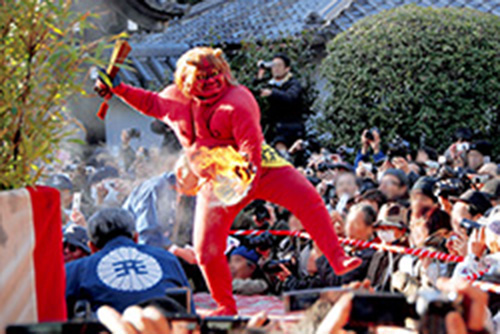
They often appear in Japanese folktales, legends, and proverbs mainly as villains.
However, good Oni also appear in some folktales
such as “Naita Aka Oni (The Red Ogre Who Cried)”
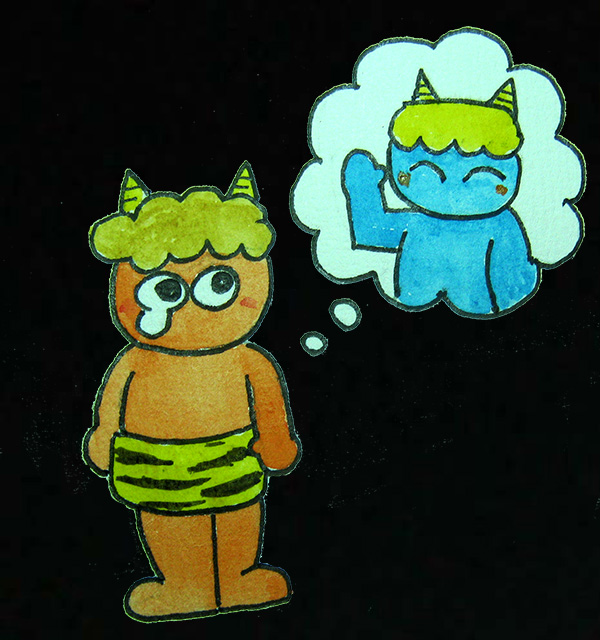
The story of “Naita Aka Oni (The Red Ogre Who Cried)” is as follows:
Once upon a time, there were two ogres. One was red, and the other was blue.
The red ogre wanted to become friends with children in a village nearby.
So, the red ogre put up a sign in front of his
house:
Home of a Gentle Ogre
All Are Welcome
Tea and Tasty Cakes Available
But no one showed up, and the red ogre grew puzzled, sad, and angry.
"I'm such a kind ogre -- why would nobody visit me?"
Despairing, the red ogre even tore down the
sign: "This is useless."
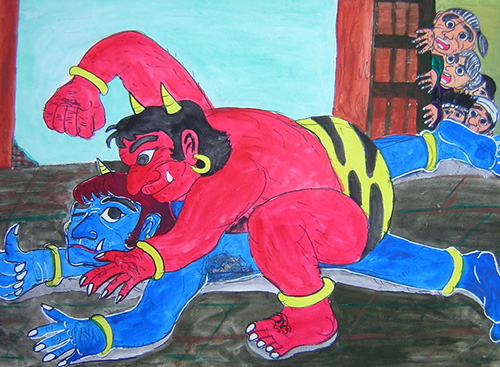
Moved by his friend's feelings, the blue ogre said, "Look, I have a plan."
The blue ogre's plan was for him to pretend to terrorize children
and then have the red ogre chase him off, "rescuing" them from him.
The plan went without a hitch, and the red ogre became the most popular creature
among the children, and all came to play with
him.
After a happy day of enjoying the children's company,
the red ogre found a letter from the blue ogre.
The letter said, "My Dear Red Ogre, if people find out
that you are a friend of the Bad Blue Ogre's,
they will not let the children come to you any more.
So, I'm leaving. Please live happily with the
children. Goodbye. Blue Ogre."
The red ogre cried out, "Blue Ogre is gone! A dear friend of mine! He is gone!"
And he wept.
The red ogre and the blue ogre were never to see each other again.
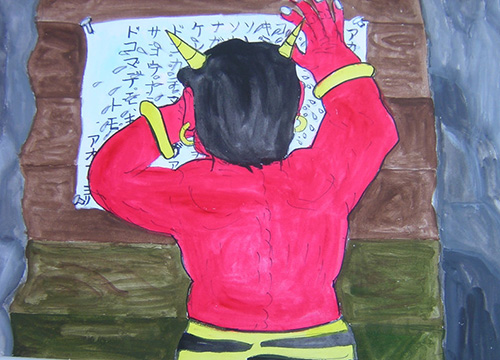
This is one of most popular and famous
folktales among children in Japan.
In Kagawa prefecture, the blue ogre is one of symbol characters.
He is called “Shinsetsu na Aooni kun (Gentle Mr. Blue Ogre)” and loved by
people.
You can find statues or signboards of the Blue Ogre
in many spots of Kagawa prefecture.
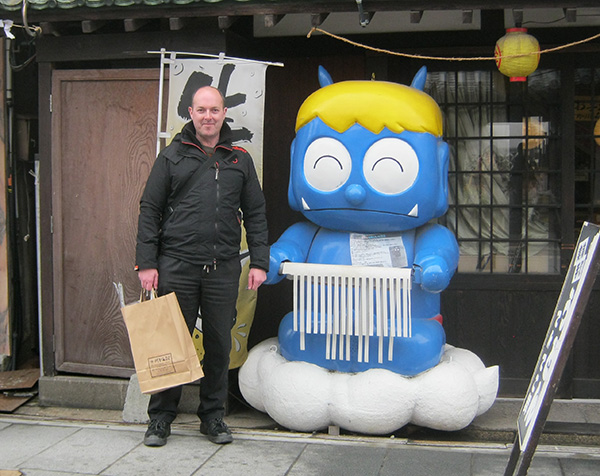
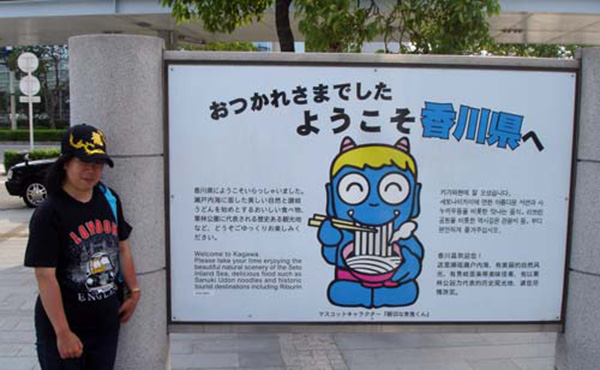
&&&&&&&&&&&&&&&&&&&&&&&&&&&&&&&
RISSHUN
&&&&&&&&&&&&&&&&&&&&&&&&&&&&&&&
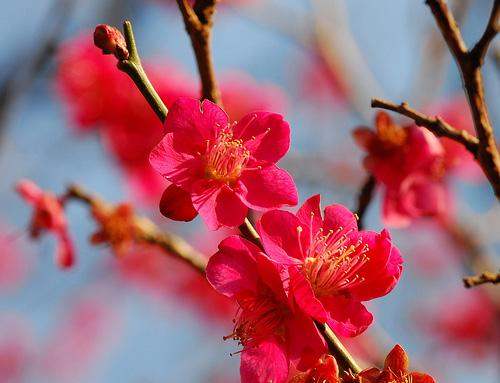
The next day after “Setsubun” is called
“Risshun”
Risshun is the first day of spring.
In some warm regions of Japan, ume trees (Japanese Apricot)
are started to be budding.
In late February, events of Ume flower appreciation
are held everywhere of Japan.
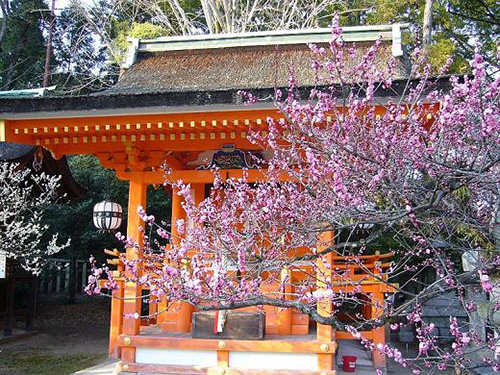
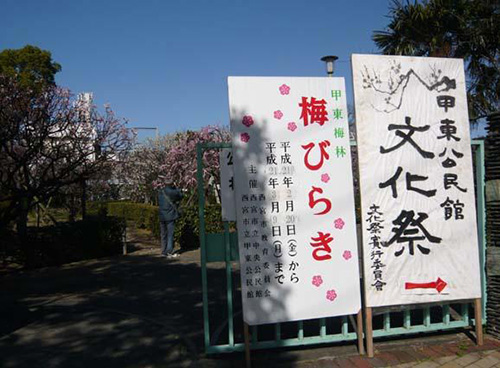
&&&&&&&&&&&&&&&&&&&&&&&&&&&&&&&
Hari Kuyou
&&&&&&&&&&&&&&&&&&&&&&&&&&&&&&&
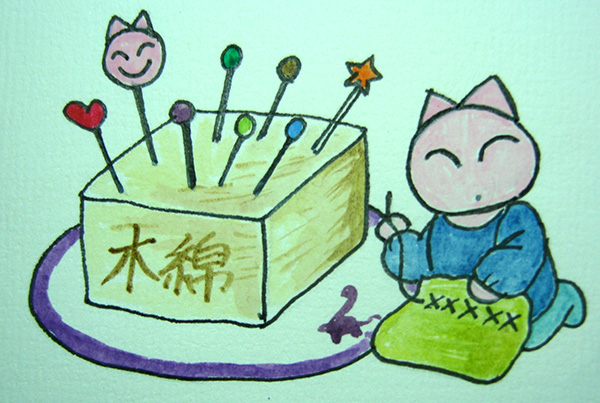
Hari kuyou is a memorial service for old
sewing needles and pins in Japan.
It is the ceremony to pray to console the broken needles.
”Hari” means needle and “Kuyou” means a memorial service in Buddhism.
Women stick broken and useless needles into a tofu or Konnyaku to have a
memorial service for the spirits of the needles and make wishes of improvement
of their skills of sewing.
The memorial services of needles are held at some shrines or temples. Women
bring their broken needles to join the ceremonies.
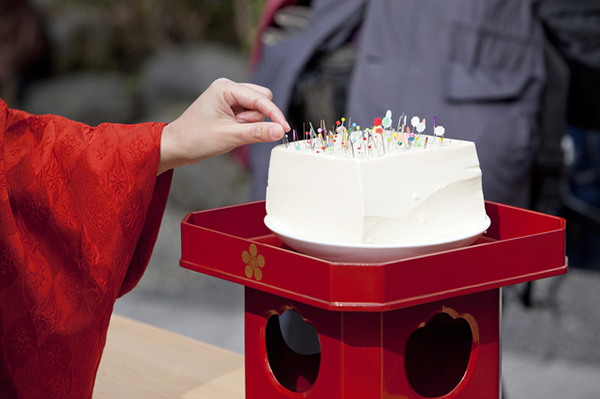
&&&&&&&&&&&&&&&&&&&&&&&&&&&&&&&
National Foundation Day
&&&&&&&&&&&&&&&&&&&&&&&&&&&&&&&
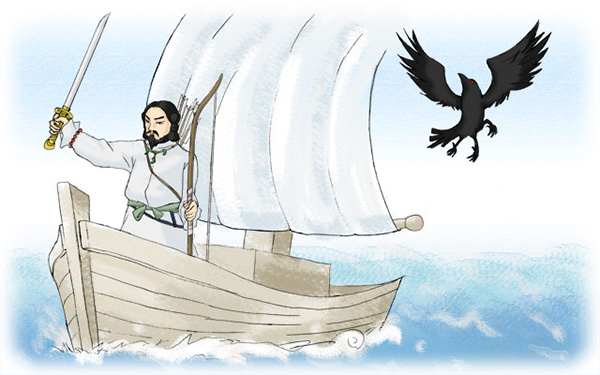
February 11th is National Foundation Day, and
one of the national holidays.
It is said that first emperor of Japan, Jiumu, ascended the throne on the day.
According to an old legend, it was on February 11th in 660 B. C.
This is based on an episode of Japanese mythology.
&&&&&&&&&&&&&&&&&&&&&&&&&&&&&&&
Japanese Valentine’s Day
&&&&&&&&&&&&&&&&&&&&&&&&&&&&&&&
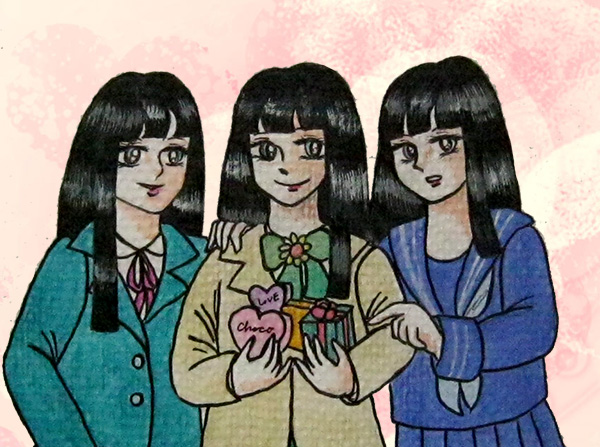
Valentine’s Day is a sort of
special day in Japan too.
In Japan, it is only the women who give presents to men on Valentine’s Day.
Japanese women are usually too shy to express their love,
so Valentine's Day was thought to be a great opportunity
to let women express their feelings.
Young girls and ladies mainly give chocolate to boys they love.
Before Valentine’s Day, various chocolates are sold at supermarkets,
department stores, and cake shops and so on.
Some girls make chocolate with their own hands
(mainly heart shaped chocolate)
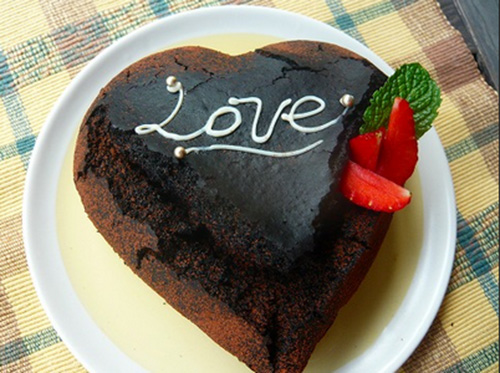
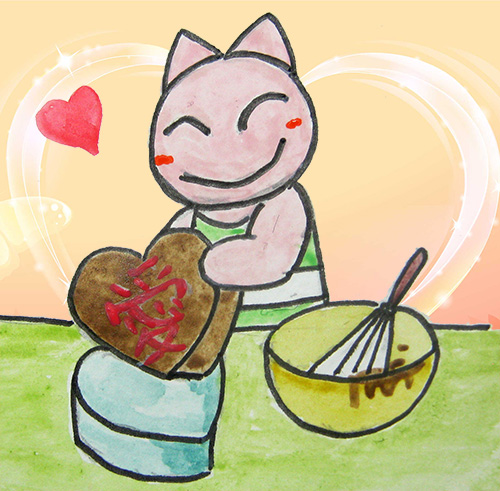
Many of Japanese men don’t have sweet teeth,
so some women present neckties, tiepins, and
gloves, instead of chocolate.
As unique Valentine’s Day Gifts, hearts shaped cactuses are getting popular
recently.

Men are supposed to return gifts to women on
March 14th.
The day is called “White Day” Men mainly choose cookies or candies for return
gifts.
“White Day” is a Japanese creation.
&&&&&&&&&&&&&&&&&&&&&&&&&&&&&&&
Sapporo Snow Festival
&&&&&&&&&&&&&&&&&&&&&&&&&&&&&&&
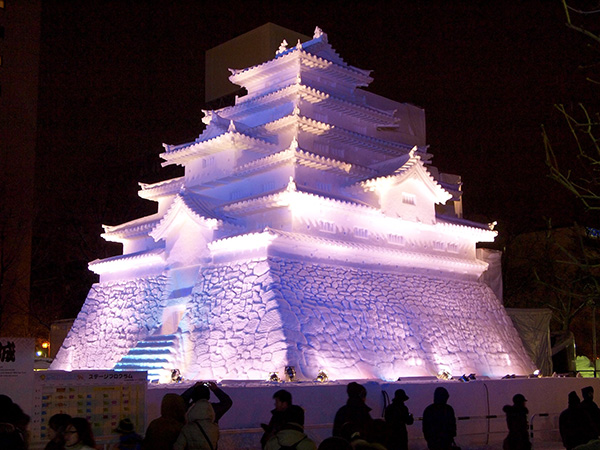
In Japan, various winter events are held
during February.
Sapporo Snow Festival is one of the largest and most distinctive winter events.
Rows of small and large snow statues are on display
at three sites in Sapporo City during this festival,
which is visited by two million people including overseas tourists.
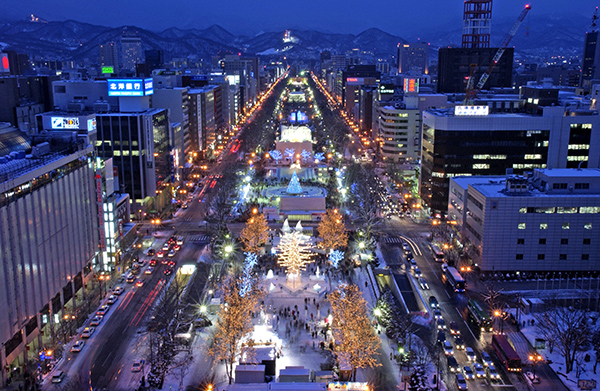
Odori Park which serves as the main venue is located in the city center,
and a space extending 1.5km transforms into a snow museum.
International Square (Nishi 11 chome, Odori) becomes the stage for the International Snow Statue Contest and every year more than 10 teams compete from all over the world.

As this is a park, you can drop by whenever you like.
The lit-up snow statues are so beautiful (-22:00).
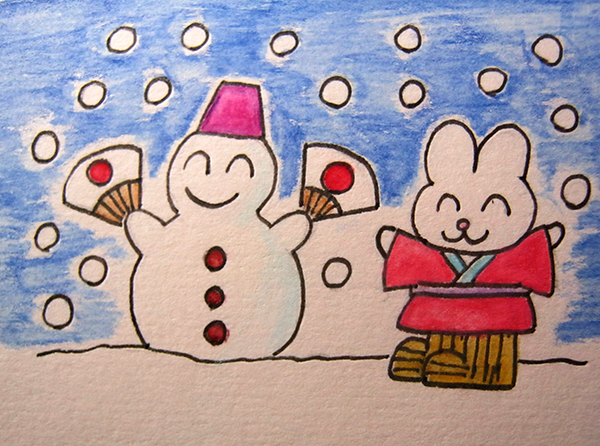
&&&&&&&&&&&&&&&&&&&&&&&&&&&&&&&
Kamakura
&&&&&&&&&&&&&&&&&&&&&&&&&&&&&&&
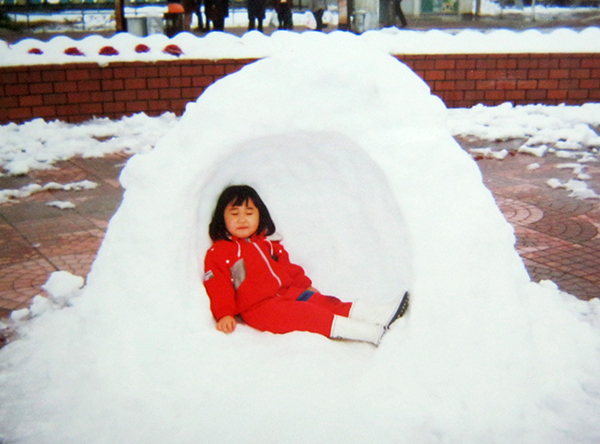
In very snowy regions, people make snow-made houses called,
“Kamakura” during this season.
It is very warm in Kamakura!
Children enjoy baking rice-cakes and boiling Amazake (Sweet Hot Sake)
in the cute round shaped snow houses, Kamakura
: )
In Akita prefecture, The Yokote Kamakura Festival
is held every mid February in the city of Yokote.
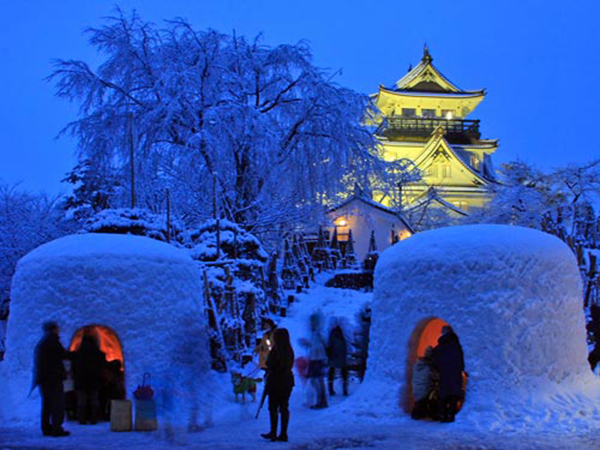
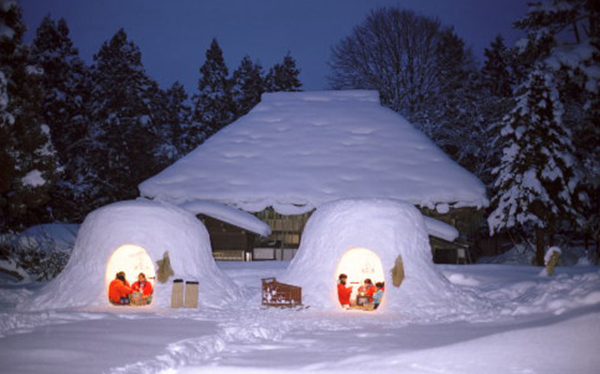
At the Festival, children in Kamakura serve
baked rice cake and Amazake for visitors.
&&&&&&&&&&&&&&&&&&&&&&&&&&&&&&&